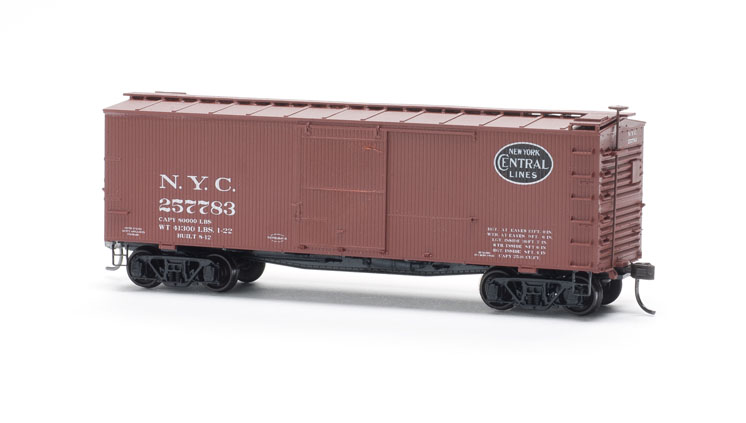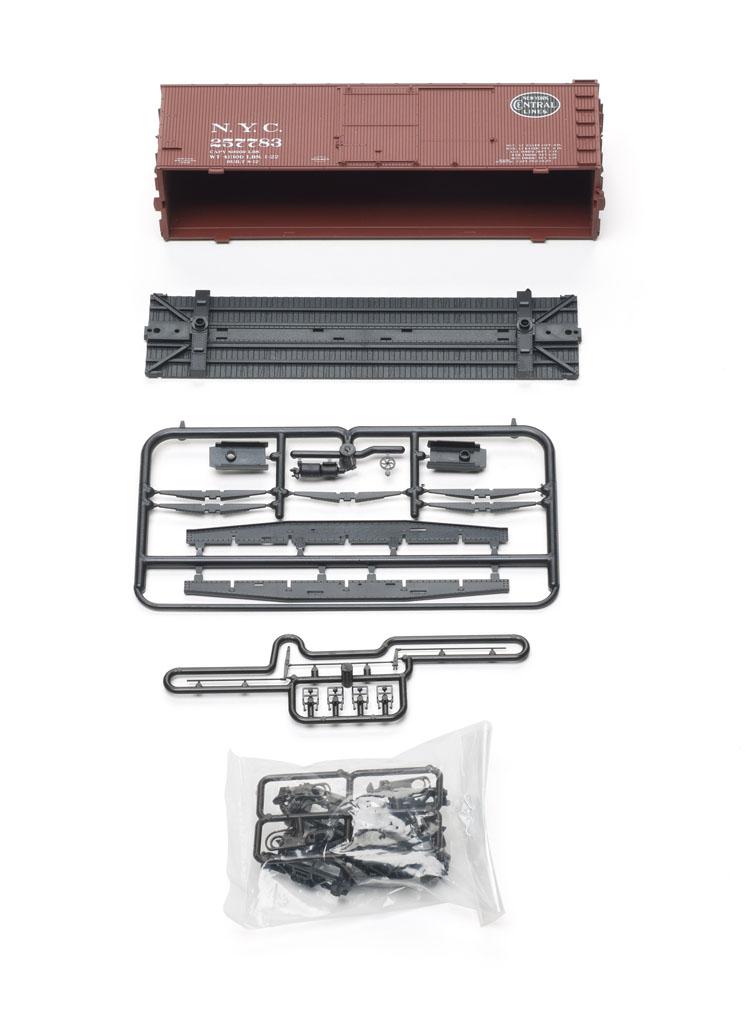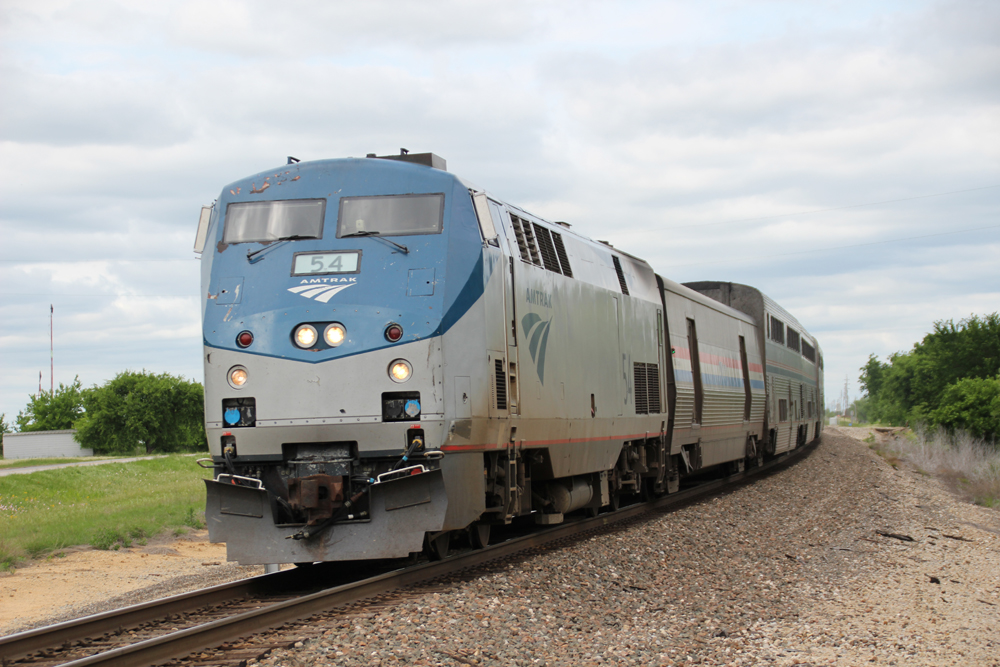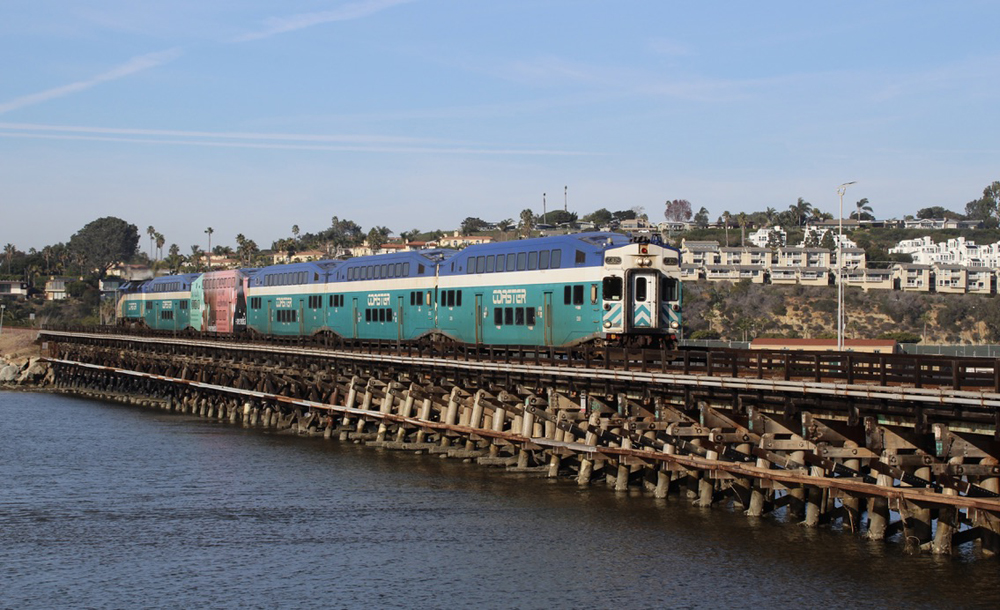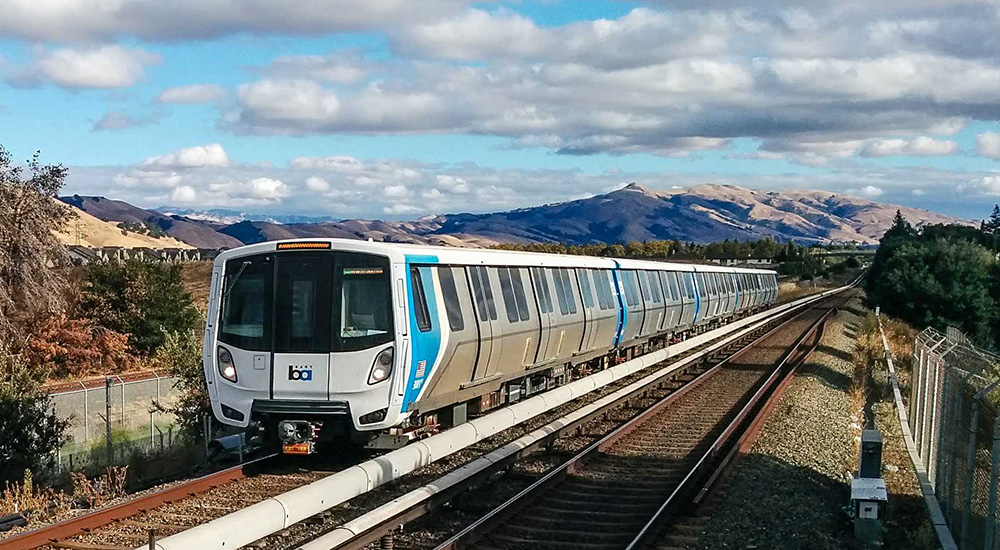As the 40-foot steel boxcar was in the steam-to-diesel transition era, the 36-foot double-sheathed boxcar was the workhorse freight car from the 1910s to the 1930s. Accurail’s new HO scale kit is an easy-to-build model of this common boxcar and includes a newly detailed fish-belly underframe. Different end and center sill combinations are also listed on the Accurail website.
By the 1910s, American freight car builders began using cast-steel underframes instead of the wood underframes with metal truss rods used on earlier cars. Most of the cars at this time still had wooden bodies. On single-sheathed cars, the wood or steel frame was visible over the layer of wood. On double-sheathed cars, the framework is sandwiched between interior and exterior layers of wood. Many of the wood-sheathed cars received steel ends and roofs during their careers.
The model. The Accurail model is based on boxcar designs of the early 1910s. The model matches the major dimensions of its prototype given in an official New York Central freight car diagram book as well as in the 1916 Car Builder’s Dictionary (Simmons-Boardman).
Our review sample came painted and decorated for NYC no. 257783, built in 1912 and rebuilt in 1922. According to the Official Railway Equipment Register, the car remained on the NYC roster through 1949. I couldn’t find a prototype photo of this car number, but the model’s lettering matches that found in photos of other NYC 36-foot boxcars in the 1920s.
The one-piece plastic carbody features well-defined molded detail, including the seams on the steel roof and the corrugations on the steel ends. Separate plastic parts include a see-through brake platform and a running board with simulated wood grain.
The car correctly models KC brake gear, including the combined reservoir and brake cylinder. On later AB brakes, these parts were separate. KC brakes were outlawed in the 1950s.
The kit. Assembly is straightforward but more involved than other Accurail boxcars. It’s important to follow the sequence outlined in the included instruction sheet. A free PDF download on the Accurail website features more tips and step-by-step photos.
The center sill assembly must be completed before attaching the sills to the underframe. For example, the brake rods and levers are a separate assembly, and must be threaded through the two fishbelly center sills. The separate crossbearers and brake cylinder/reservoir fit into slots on the center sills.
I used nippers to cut the wire brake staff to fit, attached it to the plastic brake wheel with cyanoacrylate adhesive (CA), and then painted the hand-brake assembly with Model Master Boxcar Red. Once this dried I threaded the brake staff through the hole in the brake platform and secured it with CA.
Although the ladders and other handgrabs are molded into the body, the stirrup steps at the corners of the frame are separately applied parts made of flexible plastic to resist breaking. These parts fit in slots between the frame and carbody.
I attached the included steel weight (not shown in the photo) to the interior car floor with Walthers Goo. The finished car weighs 3.1 ounces, which is .46 ounce too light, according to National Model Railroad Association (NMRA) Recommended Practice 20.1.
Trucks and couplers. The plastic truck sideframes accurately model Andrews-style cast-steel trucks that were produced from the 1910s through the 1930s. The plastic wheels are scale 33″ diameter, which is correct for the prototype. All wheels were correctly gauged.
The included Kadee-compatible Accumate couplers consist of two plastic pieces that form the coupler knuckle and shank when put together. A plastic coupler centering spring is integrated into these castings. On the finished model, both couplers rode at the proper height per NMRA S-2.
I also test-fit a pair of Kadee no. 158 metal whisker couplers (not included) into the draft gear boxes. These couplers also rode at the proper height.
This kit is a rewarding one-evening project. The 36-foot boxcar is sure to fill a hole in many HO scale steam-era fleets.
Price: $17.98
Manufacturer
Accurail Inc.
P.O. Box 278
Elburn, IL 60119
www.accurail.com
Era: 1910s to early 1950s
Road names: New York Central; Boston & Albany; Canadian Pacific; Cleveland, Cincinnati, Chicago & St. Louis (New York Central Lines); Louisville & Nashville; Michigan Central (NYC); Missouri-Kansas-Texas; Missouri Pacific; Nickel Plate Road; and Savannah & Atlanta. Data only and undecorated versions also available.





